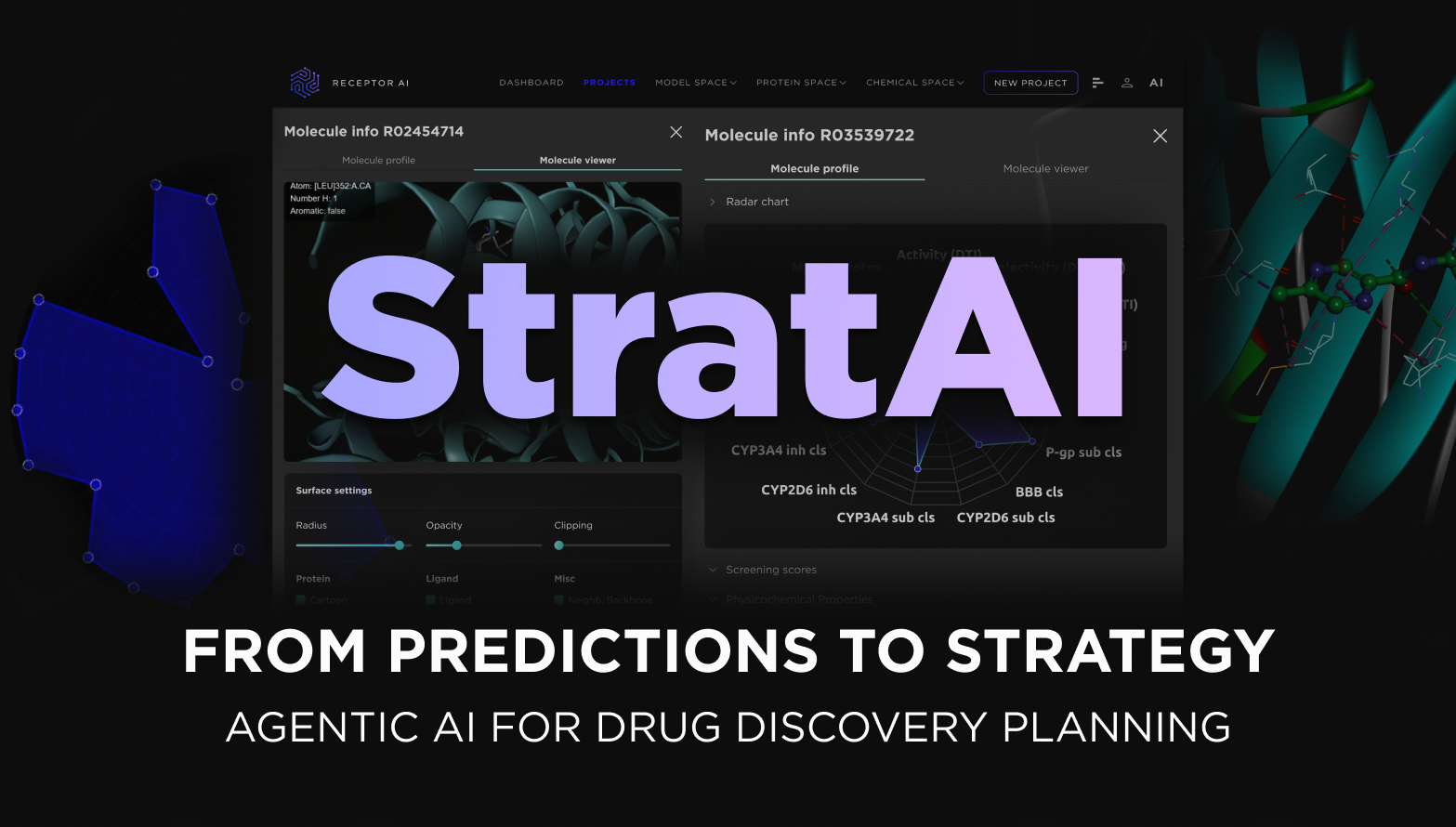From Predictions to Strategy: Designing a Planning AI Agent for Drug Discovery

From Predictions to Strategy: Designing a Planning AI Agent for Drug Discovery
PARTNERSHIP
Announcement



Summary
Full Text
Drug discovery begins with a practical yet strategic question: how should we approach this target?
Today, this question is typically answered through human synthesis of scattered evidence – by computational and medicinal chemists assembling insights from publications, databases, and prior experimental results. The process works – until a key paper is overlooked, a structure–activity relationship (SAR) trend is misinterpreted, or weeks of effort are lost to redundant analysis.
While AI systems have advanced significantly in prediction tasks – modeling activity, structure, and ADMET properties – the true bottleneck remains the planning layer. Translating literature, public compound data, and historical project outcomes into a transparent, evidence-based plan with actionable options requires more than predictive accuracy. It requires reasoning:
- Reading and integrating heterogeneous information across biology, chemistry, and technology.
- Prioritizing hypotheses by feasibility, risk, and expected impact.
- Assembling all of this into a coherent, resource-aware execution plan.
The goal is not to stack predictive models, but to transform fragmented evidence into a structured, testable strategy.
Introducing StratAI — the Planning Agent for Drug Discovery
At Receptor.AI, we developed StratAI, an agentic system designed to operationalize this planning layer. Given a target, modality, and indication, StratAI autonomously reads, organizes, and analyzes relevant information – from target biology to chemical starting points – producing a project-ready discovery strategy aligned with real-world constraints.

1. Sweep — Building the Evidence Base
StratAI constructs a comprehensive foundation of evidence, integrating:
- Structured data sources: UniProt, ChEMBL, DrugBank, assay tables, and cross-target activity panels.
- Unstructured sources: journal articles, patents, and supplementary materials.
- Internal inputs: prior SAR data, screening results, assay protocols, and project specifications.
Its literature and patent modules extract both quantitative and qualitative data to characterize the target biology, mechanism of action, modality constraints, and therapeutic context.
Two deliverables emerge from this stage:
- Annotated chemical starting points – compound series and scaffolds prioritized for immediate exploration and optimization.
- Model-ready datasets – curated compound and assay data prepared for project-specific fine-tuning of predictive models.
2. Understand — Connecting Structure and Chemistry
At this stage, StratAI organizes biological and chemical evidence into a unified structural and mechanistic understanding.
It constructs a target overview with homolog comparisons, binding-site mapping, and druggability assessment.
Ligand data are analyzed through ligand-based SAR, covering series identification, R-group trends, activity cliffs, and selectivity profiles. StratAI then coordinates 3D-SAR modeling – ensemble docking, pose clustering, and correlation with experimental activity – to generate binding-mode hypotheses linking chemical modifications to plausible molecular interactions.
Large language models (LLMs) orchestrate reasoning and documentation, while cheminformatics and structural engines handle spatial computation. The result is a transparent, traceable link between chemical design hypotheses and the underlying evidence base.
3. Propose — Delivering Actionable, Validated, and Resource-Aware Discovery Strategies
At the final stage, StratAI translates evidence and analysis into fully actionable discovery plans.
These plans are not abstract recommendations but validated, context-specific strategies – grounded in Receptor.AI’s proprietary knowledge base, infrastructure, and operational experience.
📚 Knowledge and Strategy Foundation
StratAI connects directly to Receptor.AI’s internal Drug Discovery Strategy Library, which currently includes:
- 40+ validated discovery strategies, each representing a distinct methodological pathway (e.g., peptide optimization, kinase selectivity, induced-proximity modulation, fragment evolution, covalent ligand design).
- Strategies that have been developed, executed, and refined through dozens of real-world projects, providing empirical validation and benchmarking data.
- Modular design patterns for combining computational and experimental workflows, optimized for different target classes, modalities, and data contexts.
These internal templates form a strategic reasoning backbone, enabling the agent to assemble project plans with scientific and operational consistency.
⚙️ Integration with Receptor.AI’s Infrastructure
StratAI is natively integrated into Receptor.AI’s technical and technological ecosystem, giving it detailed awareness of:
- Available AI/ML tools, cheminformatics pipelines, and modeling engines;
- Automation and data-management frameworks, including assay integration and data provenance systems;
- Infrastructure constraints and capabilities, ensuring that proposed workflows are executable within Receptor.AI’s environment.
This integration allows the agent to automatically design feasible, resource-aware workflows that reflect actual operational capabilities, rather than hypothetical pipelines.
🧬 Domain-Aware Reasoning Across Drug Discovery Use Cases
The system has internalized a comprehensive taxonomy of drug discovery use cases, covering:
- Different target classes (enzymes, receptors, protein–protein interactions, GPCRs, ion channels, etc.);
- Multiple modalities (small molecules, peptides, conjugates, degraders, molecular glues);
- Distinct approach frameworks (AI-first discovery, structure-based design, ligand-centric, or hybrid).
This enables StratAI to adapt its reasoning dynamically, selecting the most suitable strategy templates and combining them based on target evidence, available data, and project goals.
✅ Expert Validation and Iterative Refinement
Each proposed plan is:
- Evaluated and refined by Receptor.AI domain experts, ensuring that the AI-assembled strategies align with scientific and operational best practices.
- Documented with explicit evidence references, decision rationale, and feasibility assessments.
- Structured into execution phases, including computational workflows, experimental design points, and go/no-go criteria.
This hybrid approach – agentic reasoning plus expert validation – ensures that StratAI’s outputs are scientifically rigorous, operationally grounded, and ready for execution.
From Predictive Tools to Strategic Systems
The next frontier in AI-driven drug discovery is not producing larger predictive models, but creating reasoning systems that encode research logic – agents capable of synthesizing evidence, building actionable strategies, and adapting across iterations.
StratAI exemplifies this shift: a system that complements scientific teams by providing coverage, consistency, and speed – transforming project planning into an evidence-backed, resource-aware, and execution-ready process.
By integrating broad reading, structured reasoning, and practical decision support, StratAI reduces omission errors, enhances translational confidence, and shortens the path from hypothesis to validation – setting a new standard for how intelligent systems assist discovery.

